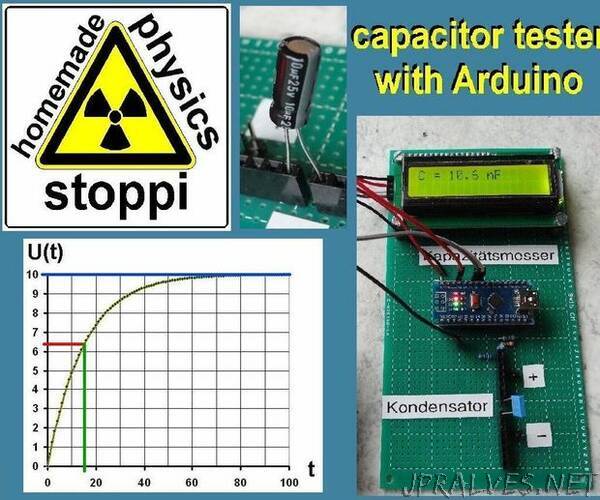
“Hello!
For this physics-unit you need:
a power supply with 0-12V_
_ one or more capacitors
one or more charging resistors_
_ a stopwatch
a multimeter for voltage measurement_
_ an arduino nano
a 16x2 IC display_
_ 1 / 4W resistors with 220, 10k, 4.7M and 1Gohms 1 gohms resistor
* dupont wire
Capacitors play a very important role in electronics.
They are used to store charges, as a filter, integrator, etc. But mathematically, there is a lot in capacitors. So you can practice exponential functions with capacitors and they. work out. If an initially uncharged capacitor is connected via a resistor to a voltage source, then charges flow continuously to the capacitor. With the increasing charge Q, according to the formula Q = C * U (C = capacitance of the capacitor), the voltage U across the capacitor also increases. However, the charging current is decreasing more and more as the rapidly charged capacitor is becoming more and more difficult to fill with charges. The voltage U (t) on the capacitor obeys the following formula:
U (t) = U0 * (1-exp (-k * t))
U0 is the voltage of the power supply, t is the time and k is a measure of the speed of the charging process. Which sizes does k depend on? The larger the storage capacity (that is, the capacitance C of the capacitor), the slower it fills with charges and the slower the voltage increases. The larger C, the smaller k. The resistance between capacitor and power supply also limits charge transport. A larger resistance R causes a smaller current I and therefore fewer charges per second flowing to the capacitor. The larger R, the smaller k. The correct relationship between k and R or C is:
k = 1 / (R * C).
The voltage U (t) at the capacitor thus increases according to the formula U (t) = U0 * (1-exp (-t / (R * C)))”
